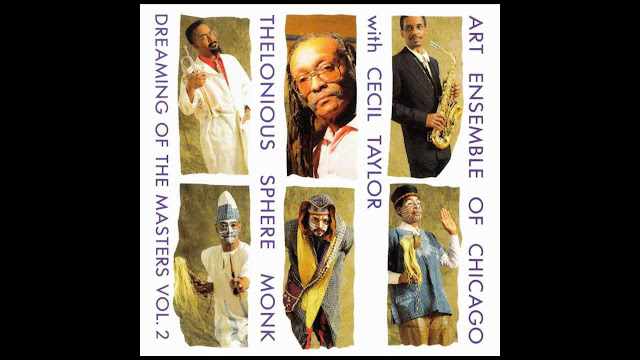According to today's New York Times:
Cecil Taylor, a pianist who challenged the jazz tradition that produced him and became one of the most bracing, rhapsodic, abstract and original improvisers of his time, died on Thursday at his home in Brooklyn. He was 89.
R.I.P., Mr. Taylor. Another of the Great Ones has departed. During his life, Taylor received a Guggenheim fellowship (1973), a National Endowment for the Arts Jazz Masters award (1990), a MacArthur genius grant (1991), and the Kyoto Prize (2014). The Times obit quotes poet and critic A. B. Spellman's 1966 appraisal of Taylor:
“There is only one musician who has, by general agreement even among those who have disliked his music, been able to incorporate all that he wants to take from classical and modern Western composition into his own distinctly individual kind of blues without in the least compromising those blues, and that is Cecil Taylor, a kind of Bartok in reverse.”
I never had the privilege of seeing Taylor perform live, but I distinctly remember a photograph of him that had a profound effect on me - Taylor sitting at the piano, playing, and in front of him, where classical musicians would put their sheet music, he had a photograph of a ballerina, her limbs blurred in the picture by her motions. It was as if he were transcribing the blurred image into multiple scales played all at once and going in all directions, just like the dancer's limbs. A quick search through Google Images didn't yield that photograph, but did provide this poster:
and this score to one of Taylor's compositions:
Here's Side 1 of a Cecil Taylor recording that had quite an impact on me, an underappreciated 1974 solo improvisation titled Spring of Two Blue J's.
and this score to one of Taylor's compositions:
Here's Side 1 of a Cecil Taylor recording that had quite an impact on me, an underappreciated 1974 solo improvisation titled Spring of Two Blue J's.
I'm not sure what it says about me (if anything) or the state of modern music (if anything), but when I first purchased a copy of Spring of Two Blue J's sometime back in the late 70s, I found it nearly unlistenable, and initially regretted my purchase. It seemed too abstract and I couldn't find an obvious access point from which I could jump into the dense musical textures, and the LP sat near the back, rarely-played section of my record collection. But in later years and especially now, I can accept the music as it is and for what it is, without needing my hand held as I wade into the deeper passages. My question is did this particular recording by this particular musician change me and teach me how to appreciate dense, non-linear music, or did everything else that I've listened to over the years allow me to be more open minded and open eared, and come to enjoy this just the way it is? Like whether or not Princess Laia had a third nipple, I'll probably never know.
Coincidentally, I was just thinking that it was about time for this series to move from covering mostly tenor saxophonists and start addressing jazz piano before this very compelling, almost urgent, reason to cover Cecil Taylor arose.
Coincidentally, I was just thinking that it was about time for this series to move from covering mostly tenor saxophonists and start addressing jazz piano before this very compelling, almost urgent, reason to cover Cecil Taylor arose.




No comments:
Post a Comment